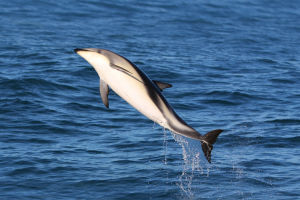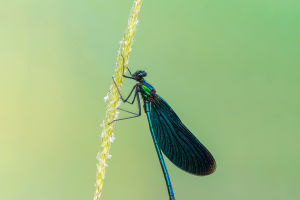The Emperor Penguin, known for its regal stance and impressive size, is the largest species of penguin and a true symbol of Antarctic wildlife.
These resilient birds are uniquely adapted to thrive in some of the harshest conditions on Earth, living and breeding in the frigid cold of the Antarctic ice.
Physical Characteristics
Emperor Penguins can reach up to 4 feet in height and weigh anywhere from 60 to 90 pounds, making them the tallest and heaviest penguin species. They have a striking appearance with a sleek black back, white belly, and a unique splash of yellow and orange on their neck and head. This distinct coloring not only gives them a royal look but also provides essential camouflage in their natural icy environment.
Habitat and Adaptation
Unlike most animals, Emperor Penguins are year-round residents of Antarctica. They have several remarkable adaptations that enable them to survive in extreme conditions. Their dense, layered feathers, combined with a thick layer of body fat, provide excellent insulation against temperatures that can plunge to -60°F (-51°C). Emperor Penguins also have unique circulatory adaptations, such as specially arranged blood vessels in their flippers and feet that minimize heat loss.
Social Behavior and Communication
Emperor Penguins are highly social and rely on their community for survival. They are known for huddling together in large groups, which helps them retain warmth by minimizing exposure to the cold. These huddles constantly shift, allowing each bird a turn at the warmer center before rotating out to the colder edges. They communicate through a variety of vocalizations, including calls that are specific to each individual. This unique sound signature allows mates and chicks to recognize each other amidst a crowd of thousands.
Breeding and Parenting
Emperor Penguins have an extraordinary approach to parenting. During the harsh Antarctic winter, females lay a single egg and then pass it to the males, who will balance the egg on their feet, keeping it warm under a special fold of skin called the brood pouch. The females then embark on a long journey to the ocean to feed. Meanwhile, the male emperors endure months without food, braving the winter temperatures and winds to keep the eggs safe. Once the females return, they regurgitate food for the newly hatched chicks, allowing the males to finally go and feed.
Diet and Hunting
Emperor Penguins primarily eat fish, krill, and squid. Their hunting skills are impressive, diving as deep as 1,800 feet and holding their breath for up to 20 minutes. They have streamlined bodies and powerful flippers that enable them to swim swiftly through the icy waters, catching prey with agility and precision.
Conservation Status
Currently, Emperor Penguins are classified as "Near Threatened" due to climate change impacts on their icy habitat. The melting of Antarctic ice affects their breeding grounds and food sources, making conservation efforts crucial. Protecting these remarkable birds and their environment is essential to preserve the delicate ecosystem they inhabit.
Lykkers, Emperor Penguins are awe-inspiring creatures, embodying resilience and adaptability. Their life cycle, unique adaptations, and cooperative behaviors offer a fascinating glimpse into life in one of the planet's most challenging environments. From their cooperative parenting to their social structures, these penguins remain icons of the Antarctic wilderness, reminding us of the importance of preserving such extraordinary species.
All About the Emperor Penguin | Continent 7: Antarctica
Video by National Geographic


